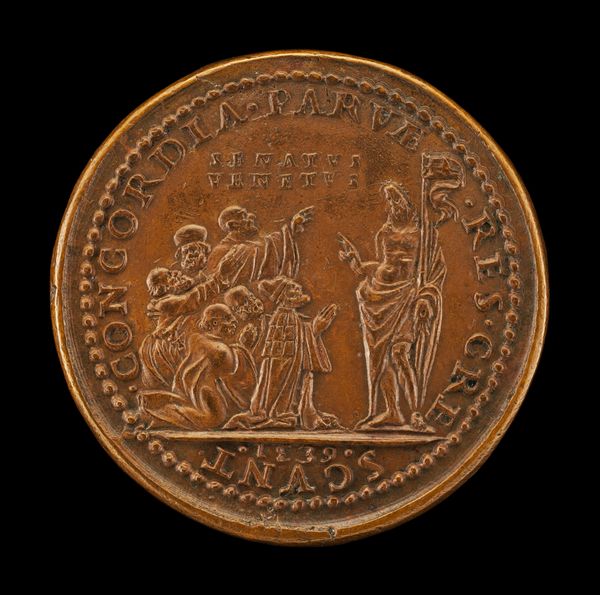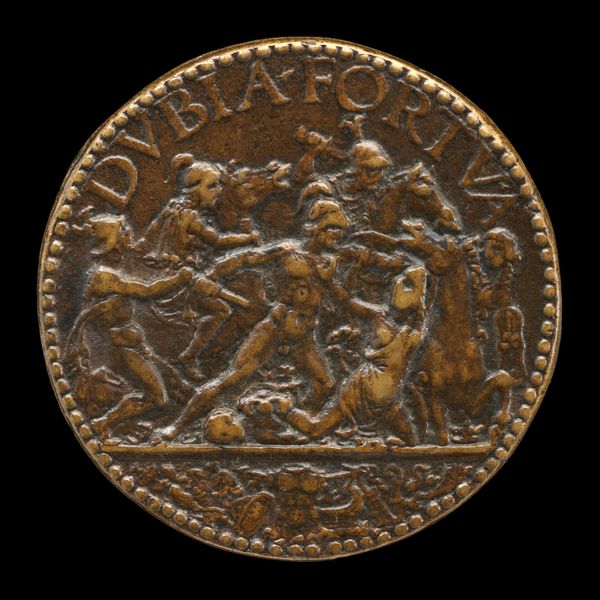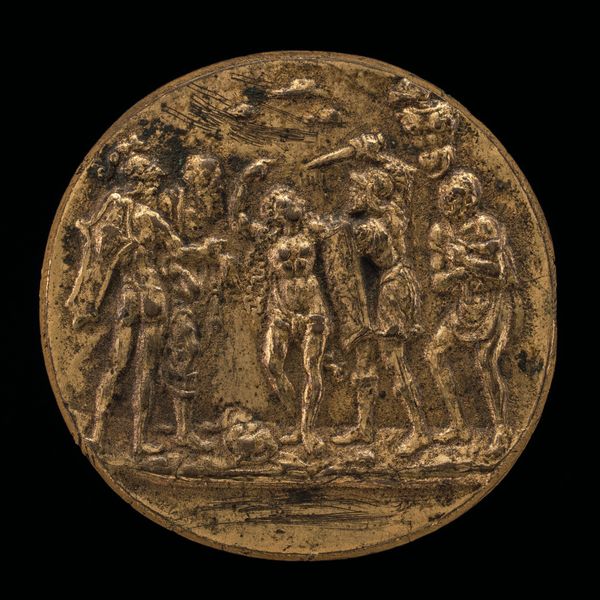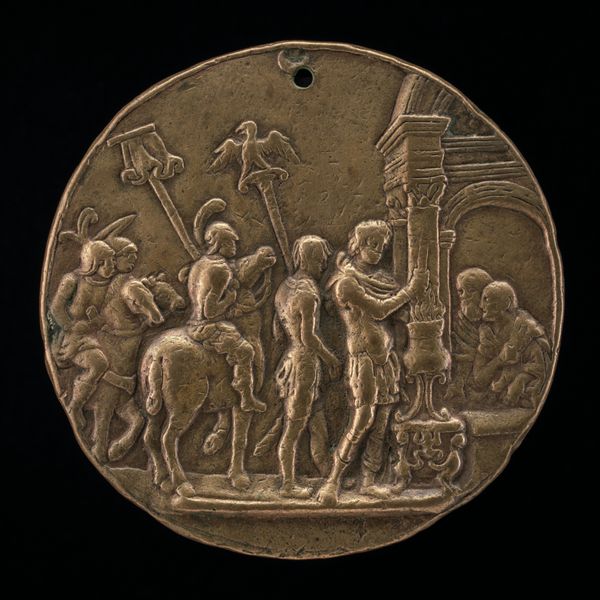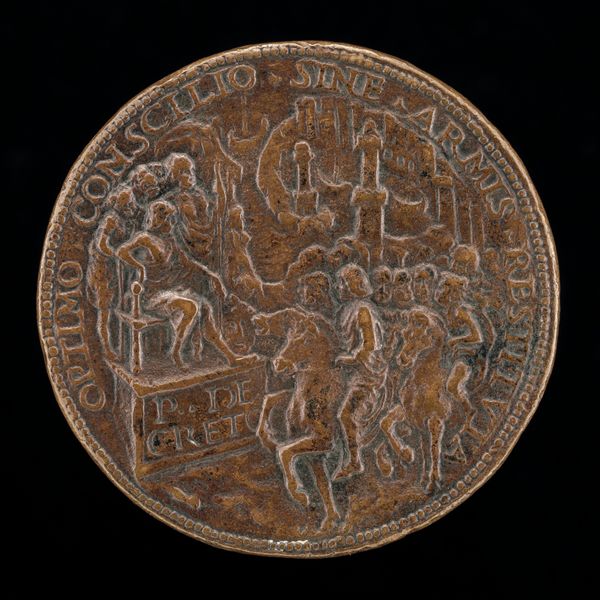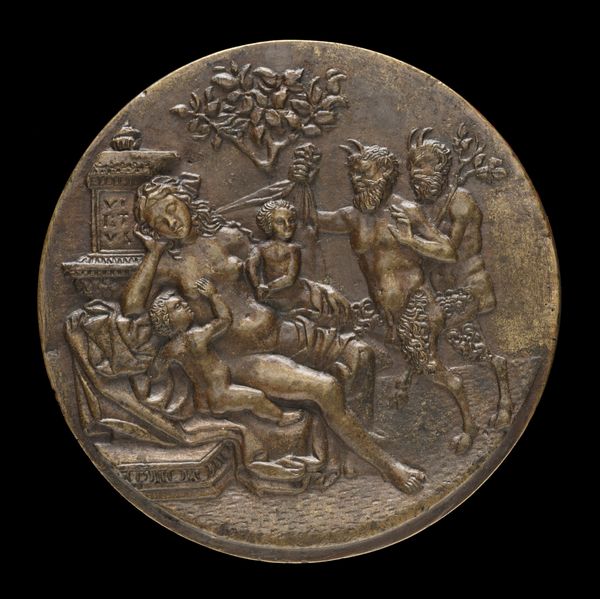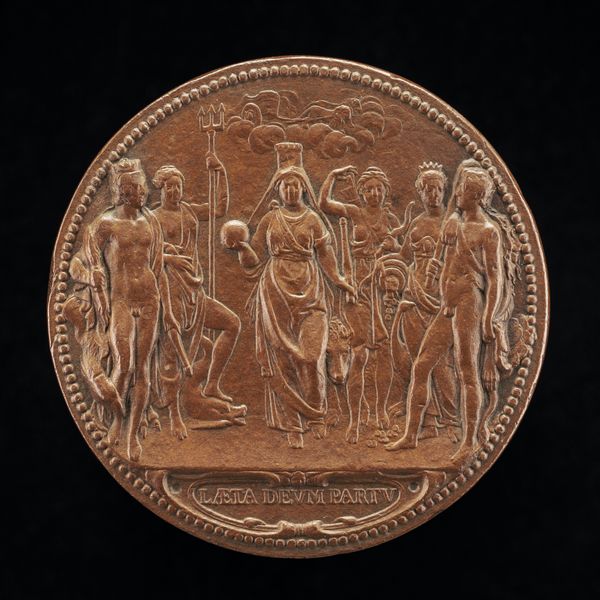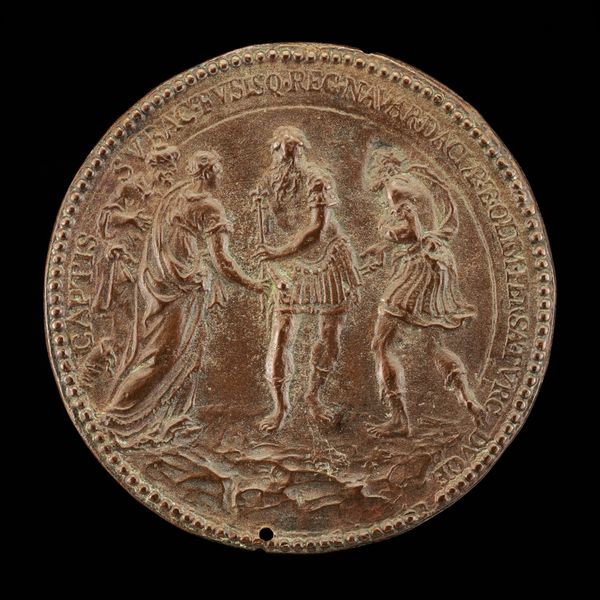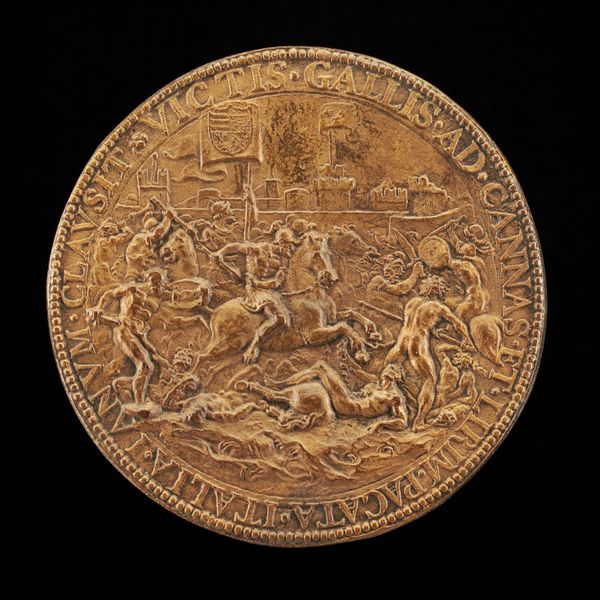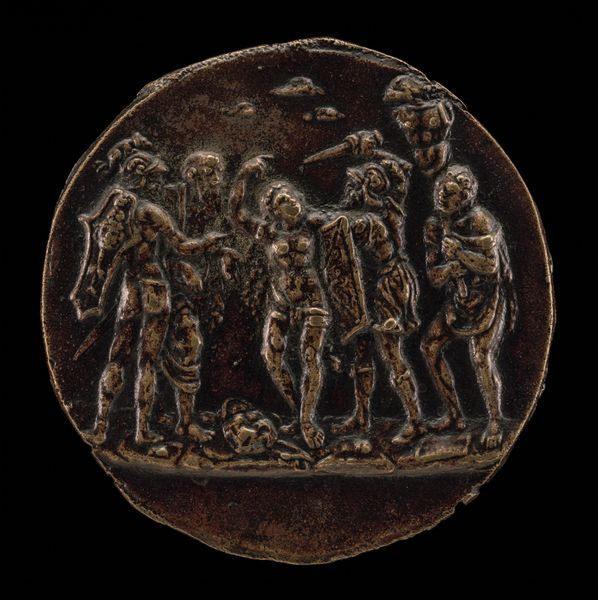
relief, bronze, sculpture
#
sculpture
#
relief
#
bronze
#
figuration
#
11_renaissance
#
sculpture
#
history-painting
#
nude
Dimensions: overall (diameter): 5.72 cm (2 1/4 in.) gross weight: 55.3 gr (0.122 lb.)
Copyright: National Gallery of Art: CC0 1.0
Curator: What strikes me first about this bronze relief, dating from around the 15th century, and titled *Ariadne at Naxos* by Master IO.F.F., is how contained yet vibrant it feels. Editor: Yes, contained is the word! A tight circular composition, the figures are packed in, their gestures swirling inwards, a frenetic energy constrained by the format. What's drawing their gaze so intently? Curator: We’re witnessing a dramatic mythological scene. Ariadne, having been abandoned on the island of Naxos by Theseus, is found by the god Bacchus and his retinue of satyrs and maenads. See the symbol of the bull held aloft? Editor: Of course, Theseus had just slain the Minotaur – a bestial creature, half man, half bull – Ariadne is also still clutching the string that guided Theseus, is she not? An explicit visual key reminding us of the event. Curator: Exactly! It reminds us of a past drama now concluding, or perhaps transitioning. The dynamism in the surrounding figures certainly points to a potent ritual unfolding with Ariadne at its heart. She is no longer the abandoned maiden, but about to ascend as the wife of the god Bacchus. Editor: Her figure definitely holds our attention, though! Notice how her pose creates counter-lines to the ecstatic Bacchanal around her, a moment of contemplative resolve – how she simultaneously joins in, and resists! And the bronze is amazing. Look at that rich brown hue and polished, reflective finish of the work – how light captures the depth of relief. Curator: The visual density lends a powerful sense of psychological richness. You can feel the cultural memory embedded here, not just in the overt mythological narrative but in the way this scene distills universal emotions: betrayal, loss, and eventual triumph. It feels quite operatic. Editor: Indeed. The artist certainly has something to say about transitions here. As a whole, though, one could say this relief gives us an example of renaissance classicism as it seeks order. The dynamism of form speaks eloquently, of course, and creates a satisfying aesthetic totality. Curator: Yes. When looking at these stories through the lens of time, we find echoes that speak to both continuity and change – reminding us of art’s timeless ability to reflect the ever-changing human experience.
Comments
No comments
Be the first to comment and join the conversation on the ultimate creative platform.

